
50 minute read
Global NFT Marketplace
from NFT: Beyond the Hype
by BLVCKPiXEL
what what what is is is NFT NFT NFT
1.1 Virtual Ownership - Introduction to digital transactions
Advertisement
1.2 Evolution of NFTs - What is NFT and their backstory?
1.3 Trading in NFT - How to sell/buy NFTs?
1.4 The Flipside - Are there any downsides of the technology?
In March 2021, Twitter CEO Jack Dorsey sold the site's first tweet as an NFT for $2.9 million. After Dorsey's announcement Tesla CEO Elon Musk teased he would sell an NFT, but later turned down a $1 million offer for his tweet. “ “
1.1 Virtual Ownership
Ownership is deeply human. From ancient times, our ancestors have loved to collect things for self expression and identity. This led to the foundation of trade. Firstly, trade started with barter systems, and then the concept of currency was introduced which kept evolving in different forms. Similarly, collectibles also evolved from shells to pokemon cards or comic books to even toilet paper in the Covid19 pandemic!
Barter System Cash Currency
Gold Coins
Plastic Money Cryptocurrency
©BLVCK PiXEL Gold
Electronic Money
However, digital media did not share the same path of ownership until the invention of NFTs. Before NFT, the ownership, in most cases, shifted to user-ship. For example, we don’t need to buy a CD of songs when we have memberships of music apps. Nevertheless, this did not give digital goods their identity.
With the introduction of NFTs, digital pieces have their unique ownership and identity.
The digital age brings with itself new forms of collectibles - Digital Assets - digital pieces of art, virtual real estate, domain names. Collectibles are not just for their value, but also for a symbol of royalty and authenticity. NFTs give the joy of ownership and are frontiers for
crypto.
NFT or Non-fungible token is a unit of data on a digital ledger called a blockchain, where each NFT can represent a unique digital item, and thus they are not interchangeable making them (more or less) unique.
Digital money, such as cryptocurrency, is fungible unlike the Digital Assets. Fungibility signifies the ease to which an asset can be interchanged or swapped with another. For example, trade one bitcoin for another, and you’ll have exactly the same thing - hence, a bitcoin is fungible. A one-of-a-kind trading card, however, is non-fungible. If you traded it for a different card, you’d have something completely different.
Fungible assets were the first registered on a blockchain through native cryptocurrencies like Bitcoin and Ether. These cryptocurrencies are exchanged on public ledgers and are fungible, which means the value of one token, discounting a token’s provenance, is indistinguishable from another. They are divisible and highly interchangeable assets similar to most modern currencies.
In 2017, many entities started minting their own cryptocurrency, based on the Ethereum blockchain. To ensure interoperability across exchanges and wallets, a token standard for this fungible asset class was defined, known as ERC-20. Today, the majority of tokens fit this description. Similarly, digital assets were also traded in the virtual world, but, these assets did not allow unique ownership.
Blockchain radically changes transparency and tracking of an asset. The development of the technology led to the inevitable question - How can we obtain the advantages of a public blockchain for the (digital) goods?
This is the origin of the non-fungible token — also known as NFTs, nifties or ERC-721 tokens.
In a nutshell, we are, now, converting fungible assets (like money) into non-fungible assets (like goods) in the digital space.
What is NFT?
NFTs can represent digital files such as art, audio, videos, items in video games and other forms of creative work. The NFTs can be bought on an NFT market. Access to any copy of the original file, however, is not restricted to the owner of the token. While the digital files themselves are infinitely reproducible, the NFTs representing them are tracked on their underlying blockchains and provide buyers with proof of ownership of the NFTs.
Blockchains such as Ethereum, Tezos, and Flow each have their own token standards to define their use of NFTs. Increased interest in the market for NFTs has resulted in increased
speculation, as the same investors who had previously speculated on cryptocurrencies began trading NFTs at greatly increasing volumes.
NFTs mostly run on a proof-of-work blockchain, which is less energy efficient than a proofof-stake blockchain. This has resulted in some criticism of the carbon footprint for NFT
transactions (more details on page 10).
Use of NFTs to date
NFTs have been used to create ‘verifiable digital scarcity’, where a potential buyer can be highly confident in an asset’s provenance and authenticity. What’s more, the owner is free to keep, move or trade their NFTs as they see fit. A practice that has been near impossible on proprietary platforms until now.
Colored Coins are often considered the conceptual spark for NFTs. Beginning in 2012, these small denominations of bitcoin were used to represent assets from digital collectibles and property to company shares.
From the Counterparty platform through the CyptoKitties blockchain game and to this month’s landmark sale of Beeple’s artwork, NFTs have only risen in profile and popularity. Image Source: Jingdaily
Counterparty, came next in 2014, a peer-to-peer financial platform on the Bitcoin blockchain that became a hub for digital asset creation and trading. With this memes and trading cards thrived.
NFTs hit the mainstream in 2017 with CryptoKitties. One of the earliest attempts to deploy blockchain technology for recreation and leisure, Cryptokitties, is a game centered around collectible cats, pioneered by Dieter Shirley in late 2017. This was the first significant adoption of non-fungible tokens. The game's popularity in December 2017 congested the Ethereum network, causing it to reach an all-time high in the number of transactions. The blockchain application (Smart Contract) facilitates the creation, breeding and trading of virtual cats. The smart contracts have over 4-billion variations of phenotypes (what you see) and genotypes (what you don’t see). These contract(s) set the rules for the creation, breeding and ownership of these tokenized cats, each with their own unique appearance and identity. Participants of the game trade and breed cats. As of 2021, CryptoKitties has recorded an all-time transaction volume of roughly $36.8 million dollars. On the 4th of September 2018, a CryptoKitty named Dragon was sold for 600 ETH (Ether), with an estimated USD value of $172,000.
The Hypecycle
Beginning of 2021’s saw a manic demand for NFTs which can be explained through a confluence of factors:
Ÿ Cryptocurrency investors started to diversify their portfolios after years of growth Ÿ Pandemic lockdowns saw homebound creators and collectors invest more time and money in NFTs ($250 million of NFT volume traded in 2020, up 300 percent year-onyear) Ÿ Emerging NFT marketplaces (see section 04) have become more user-friendly, bringing in new collectors
Ÿ Celebrity interest (Grimes, Mark Cuban, Lindsay Lohan, etc.) has generated huge hype
This hype was followed by a sharp decline in April 2021 when the average price of NFTs plummeted almost 70% from a peak of around $4,000 in mid-February to around $1,400 in early April. Till this report was published, the sales continued to decline. Experts say a drop in value was inevitable. An over-saturation of platforms is making it hard to differentiate and navigate. Experts also say that there are elements of a hype cycle in this one, but we still see it as an immense long-term opportunity.
1.3 Trading NFTs
Why would someone purchase an NFT over a physical item?
At first, the idea of dealing in digital assets may sound strange to some. But many digital content creators and collectors see NFTs as a more secure and long-term investment.
The demand for digital devices is increasing. The collectibles have also changed their forms from physical to digital accordingly. Humans tend to find more relevant stuff in devices than in the physical world now. Once bought, you are a lifelong owner of your asset. Anyone can easily purchase NFTs online by cutting out the intermediaries involved in trading goods. NFTs hold good the basic principles followed by Blockchain technology- transparency, distributed system, no central organization and well secure.
How is an NFT valued?
The value of NFT depends on the demand of the artist if talking about digital artworks. Following the basic principles of the economy, the price rises with the demand. As the NFT is newly trending and has created a lot of hype recently, the prices are not stable. It might create a bubble just as crypto currencies. In the future, professional valuation mechanisms that take predictive analytics under consideration from the past, present and future values, will provide a better view on evaluation.
How do I buy and sell an NFT?
NFT deals are made in cryptocurrencies with Ethereum being the most preferred one. There are NFT marketplaces which allow acquiring NFTs from hand-picked organized platforms that specifically trade in digital assets. Open marketplaces, like OpenSea.io, are popular for dealing with NFTs. Buyers mostly look into MakersPlace, SuperRare, KnownOrigin, and Nifty Gateway for digital arts.
Which blockchains offer NFTs?
Most NFTs exist on the Ethereum, other cryptocurrencies including Flow. The competition is increasing with the likes of WAX, Matic, EOS and Tron entering the game.
1.3 Trading NFTs
How does NFT work?
NFTs are created in the digital space through a marketplace or a similar channel with a digital token or certificate that can authenticate a claim of ownership to an asset and which allows it to be transferred or sold.
The certificates are secured on a digital ledger with blockchain technology similar to what underpins Bitcoin and other cryptocurrencies. Hence it offers transparency, immutability and security.
Consumers can buy or sell it in a NFT marketplace with cryptocurrencies mainly Ethereum. The sale and resale process often involves bidding.
Once bought, the buyer has the sole ownership of that asset.
Gucci Ghost Yellow Aqua
Last sold for $3,600, the current owner has put it for sale at $16,300.
Source: niftygateway.com
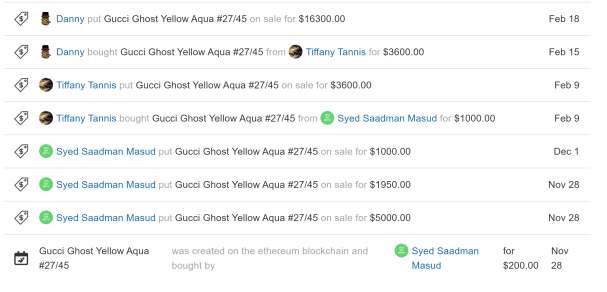
Source: niftygateway.com
1.4 The Flipside

Mining rigs mine the Ethereum and Zilliqa cryptocurrencies at the Evobits crypto farm in Cluj-Napoca, Romania, on Jan. 22, 2021. Akos Stiller—Bloomberg/Getty Images
The environmental cost
Lately, there has been some discussion regarding the environmental impact of the technology used in NFTs-blockchain technology. Blockchains act as a digital ledger and store long chains of information, creating these digital ledgers requires a large amount of computation. New blocks of information are added — or “mined” — such that the network holds the decentralized and distributed nature of blockchain based on a process known as proof-of-work, which requires expensive computer hardware that consumes a lot of power.
According to an article published last year in the International Journal of Engineering and Research and Technology, a single Ethereum transaction consumes enough energy to “easily power multiple U.S. households for one full day.” Though the mechanism is still in the debut stages, Ethereum confirms that it is working to change its process involved and make it a more energy-efficient process.
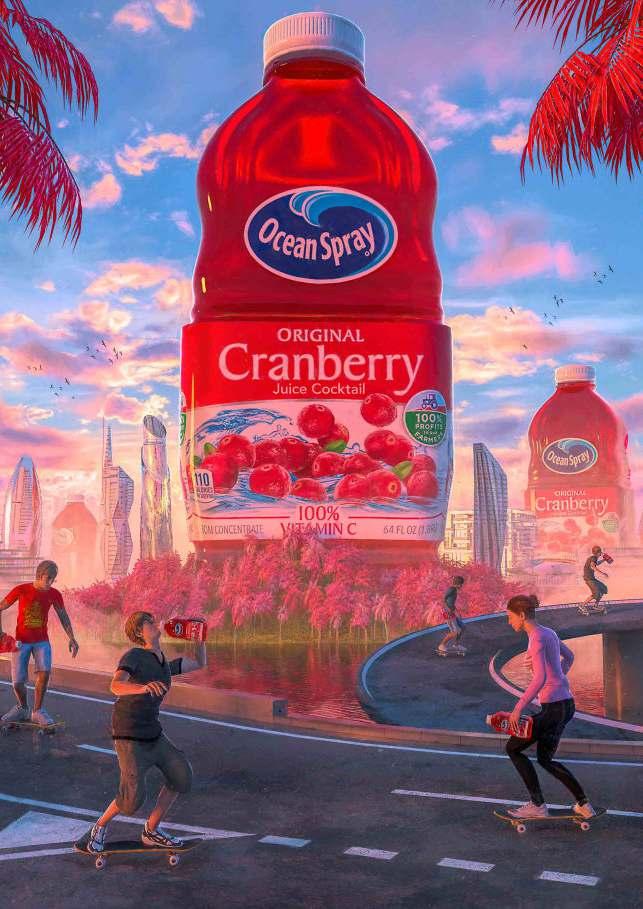
market market market overview overview overview
2.1 NFTs across sectors - What is the latest in NFT trading?
2.2 Digital Art - The boom in the sector and the future trends
2.3 Mushrooming Marketplaces - The rush in NFT trading
2.4 Stepping into the Metaverse - Virtual Real Estate
What types of NFTs are being offered?
There are a huge variety of digital assets being offered as NFTs across different platforms. From esports to outdoor games and from artwork to fashion we have NFTs for almost every field. NFTs of artworks are similar to autographed items. The unique identity and ownership of an NFT is verifiable via the blockchain ledger. NFTs have metadata that is processed through a cryptographic hash function.
Collectibles
NFTs can represent collectibles like card collections but in a digital format. In February 2021, a Lebron James slam dunk NFT card on the NBA Top Shot platform sold for $208,000.
Gaming
In gaming, there’s a popular NFT platform for basketball fans, NBA Top Shot, to collect game highlights in digital form. The space boasted an impressive $205 million USD in sales by the end of February. NFTs can also be used to represent in-game assets, such as digital plots of land, which are controlled by the user instead of the game developer. NFTs allow assets to be traded on third-party marketplaces without permission from the game developer. In February 2021, Axie Infinity recorded a sale of $1.5 million for digital land titles in a single sale.
Music
The music industry is surging to get involved in the sale of NFTs. In March 2021, American rapper Lil Pump did a partnership with the NFT platform Sweet to release a special NFT collection. Deadmau5 released a series of digital collectibles using NFT on the WAX blockchain, while electronic musician 3LAU sold $11.6 million USD in NFTs via an online
auction.
Sports
Athletes are also jumping in to take advantage of the NFT boom in various ways. In September 2019, pro-NBA player Spencer Dinwiddie tokenized his contract so that others can invest into it. In March 2021, pro-tennis player Oleksandra Oliynykova offered prospective NFT buyers the lifetime rights to part of her right arm.
2.2 The boom in Digital Art
Digital art has , particularly, seen a revolution with the advent of NFTs. Multiple digital-art trading platforms or marketplaces have come up brining in millions for creators and sellers. Most such platforms allow creators to gather a royalty. Some art platforms are more exclusive, while others focus on letting anyone create and sell their art.
For professional digital artists, NFTs have opened creators to a windfall of profit. Today, there are many trading platforms or marketplaces, such as Nifty Gateway, where Digital Art is sold. Digital-art trading platforms could make more traditional art markets obsolete.
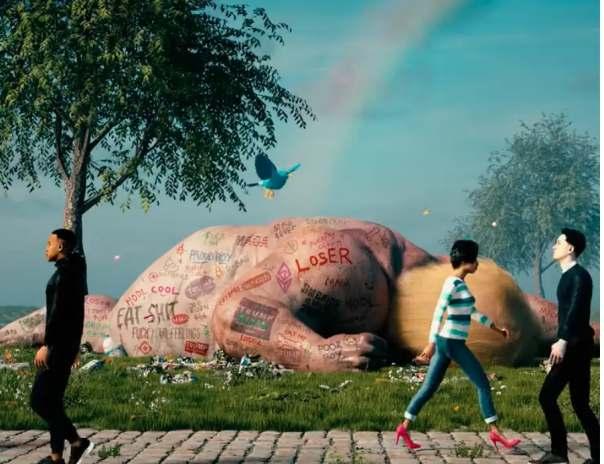
CROSSROADS by net artist Beeple Image courtesy: Beeple/Nifty Gateway
Michael Winkelmann's "Crossroads" was resold for $6.6 million off Nifty Gateway, a premier digital art marketplace
2.2 The boom in Digital Art
Some traditional auction houses have already started to get in on NFTs. In February, Christie's - an auction house that was founded in 1766 - made its first foray into digital tokens with the auction of a $69 million Beeple art.
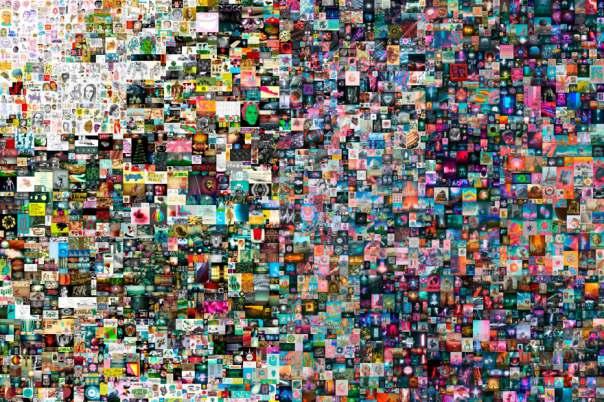
Beeple’s collage, Everydays: The First 5000 Days, sold at Christie’s
The American artist Michael Joseph Winkelmann, professionally known as Beeple or Beeple Crap is a visionary digital artist at the forefront of NFT. Beeple is known for using various mediums in creating comical, phantasmagoric works that makes political, social commentary while using pop culture figures as references. Everydays: the First 5000 Days
is a collage of images from his "Everydays" series, and has become the third-most
expensive artwork by a living artist. It is the first purely non-fungible token to be sold by Christie's. The auction house had previously sold Block 21, an NFT with accompanying physical painting for approximately $130,000 in October.
Since the success of Chritie’s, famed auction house Sotheby's has also announced plans to sell NFTs. In partnership with NFT marketplace Nifty Gateway, Sotheby's will offer works by Pak, one of the best-known and highest-selling digital artists, whose identity remains a
mystery.
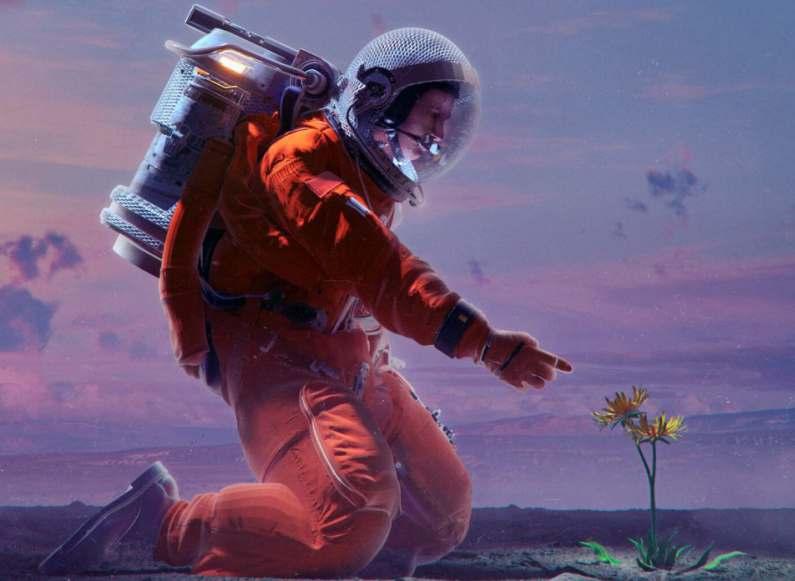

2.3 Mushrooming Marketplaces
NFT Marketplaces are cropping up everyday!
NFT marketplaces are quickly rising to prominence in 2021. Simply put, they provide a marketplace for the buying, selling, and trading of NFT tokens. Many of these provide platform to artists who basically only existed on Instagram or Twitter and were creating all this really special work, but never had a way to make money from it. They can now sell crypto art and are already starting to see some benefits and recognition.
Investments in NFTs rose 299% in 2020, gaining popularity as cryptocurrencies like Bitcoin continued to boom, according to the report. In the past 30 days alone, NFT Marketplaces have generated over $1 billion in sales, according to CryptoSlam.
Below is rankings and analysis of NFT Marketplaces with respect to their token trading volumes, number of traders per marketplace and more key metrics. OpenSea is a dominant player currently followed by NBA Top Shot.
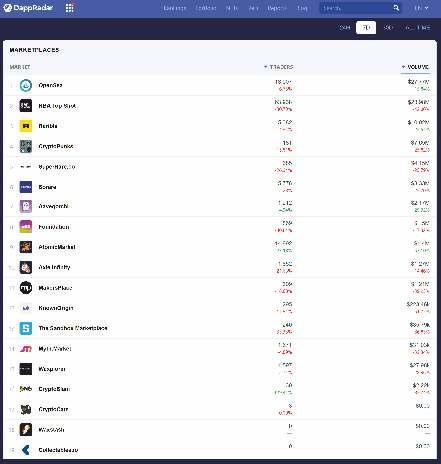
Source: DappRadar (08 March - 07 April 2021)
2.3 Mushrooming Marketplaces
Top Examples: OpenSea
United States of America
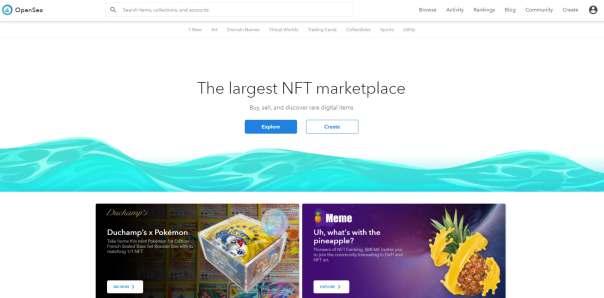
OpenSea boldly describes itself as being the largest NFT marketplace. It offers a wide range of non-fungible tokens, including art, censorship-resistant domain names, virtual worlds, trading cards, sports, and collectibles. It includes ERC721 and ERC1155 assets. You can buy, sell, and discover exclusive digital assets like Axies, ENS names, CryptoKitties, Decentraland, and more. They feature over 700 different projects, including trading card games, collectible games to digital art projects, and name systems like ENS (Ethereum Name Service).
Creators can create their own items on the blockchain using OpenSea's item minting tool. You can use it to make a collection and NFTs for free, without the need for a single line of code. If you're developing your own smart contract for a game, digital collectible, or some other project with unique digital items on the blockchain, you can easily get added to OpenSea.
If you're selling items on OpenSea, you can sell an item for a fixed price, create a declining price listing, or make an auction listing.
2.3 Mushrooming Marketplaces
Top Examples: NBA Top Shot
Vancouver, British Columbia, owned by DapperLabs
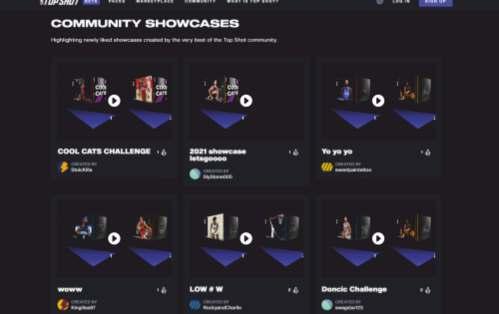
NBA Top Shot is a first-of-its-kind collectible game that allows people to collect, trade, and sell their favorite NBA highlights as digital tokens. These highlights can be collected to complete timed challenges, arranged into showcases, and eventually carried over into the forthcoming game experience!
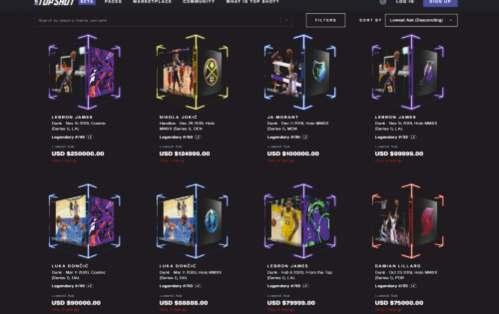
More in Section 04, page 49
2.4 Stepping into the Metaverse
Virtual Real Estate
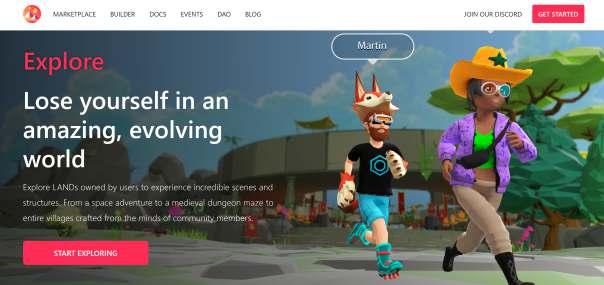
Decentraland.com
Digital real estate might be the next big area for investment, according to the co-head of Republic Real Estate Janine Yorio. NFT sites that capitalize on virtual reality and real estate include Decentraland, which is built on Ethereum and owned and created by users.
Decentraland operates as a multiplayer role-playing game and allows users to build an entire virtual world as an NFT. Yorio calls it a more sophisticated “SimCity," "Minecraft," or "Fortnite". In March, Atari, the gaming company known for "PAC-MAN," announced plans to develop a cryptocurrency casino in Decentraland. Decentraland's internal currency, "MANA," has a $225 million market value. MANA prices have risen over 321% in the past year, according to Yorio.
Fabricant, Amsterdam based digital fashion house, recently ran a 3D fashion design competition in collaboration with Adidas and Karlie Kloss’s nonprofit, Kode With Klossy. The top 20 submissions were then auctioned as NFTs. They were also on display in a gallery in Decentraland. Visitors inhabiting avatars could view the artwork and virtually bid on the designs. The winning design netted 1.4 ETH, about $2,400 at current exchange rates. Proceeds from the auction went directly to the featured artists, while voluntary contributions supported new events and programming for Kode With Klossy’s alumni community of more than 5,000 scholars.
luxury’s luxury’s luxury’s digital digital digital avatar avatar avatar
3.1 Industry Shifts
3.2 NFT Product Drops
3.3 The Commerce of Gaming
3.4 Digital Fashion Platforms
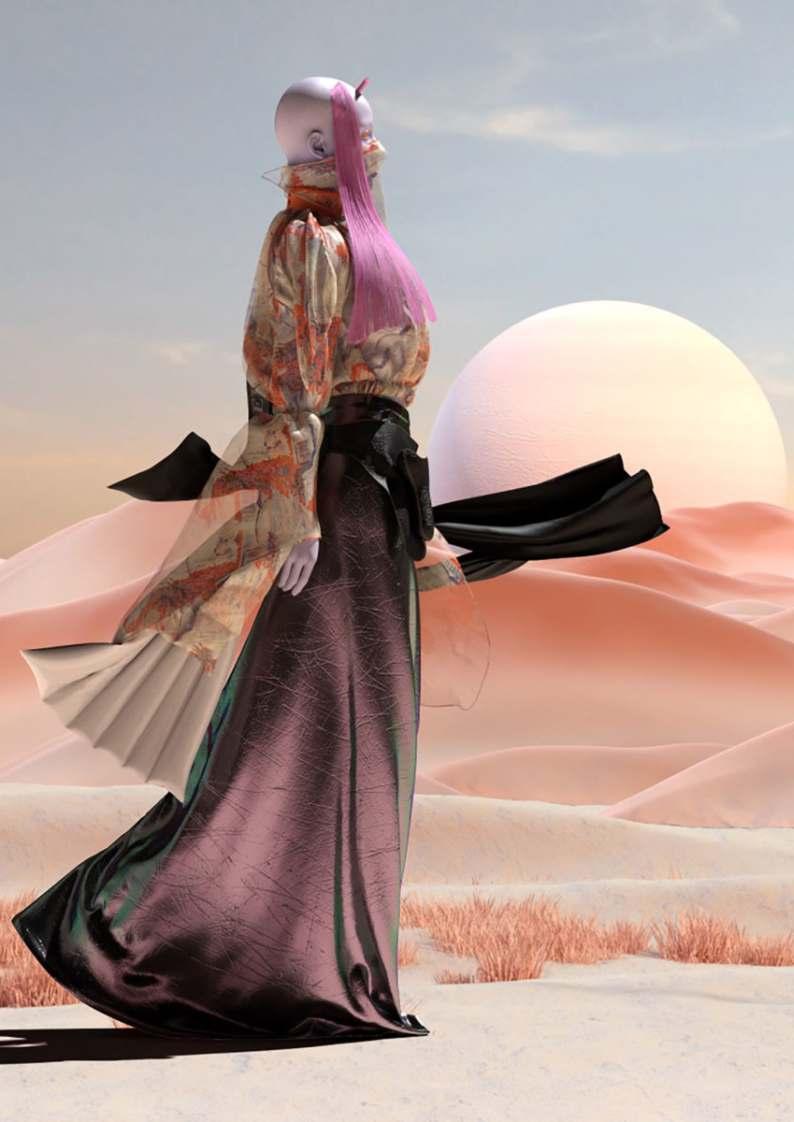
It's “only a matter of time” before a brand like Gucci will release an NFT “ “
Gucci to Vogue Business
(March 2021)
3.1 Industry Shifts
When art, sports, and music are evolving in this hyperdigital world, how can Fashion stay untouched!
Changing Consumer Behaviour
The digital clothing industry, currently driven by a legion of social media-obsessed millennials, are expected to drive those sales, and has the potential to represent one percent of the fashion market share at $25 billion. Fortnite, the top money making, free-toplay game reportedly made an estimated $2.4 billion in 2018.
Traditional engagement models on established social media platforms are becoming a thing of past, and fashion players are finding creative solutions to redefine their strategy and find ways to maximise their return on marketing spend. Attention-grabbing content are deployed on the right platform for each market with persuasive selling and integrated checkout experiences.
The Pandemic Effect
Furthermore, interest in virtual fashion has exploded during the 2020 coronavirus pandemic as people explore digital ways of entertaining themselves. Not only the consumers, but also the pandemic has made the brands adopt digital. Dior and RIMOWA launched a capsule last month through their collaboration on a Snapchat application. The capsule launch included three exclusive augmented reality lenses bringing into to life creations designed by Kim Jones and the luxury luggage specialist. The first evokes the collection’s ad campaign lensed by Steven Meisel, notably revealing a futuristic car inside which the RIMOWA cabin suitcase
can be discovered, while the second, like a magic mask, covers the viewer’s face with the iconic Dior Oblique motif. During an event in Paris, guests were able to scan cards via the application, allowing them – thanks to Marker Tech technology – to make the Personal clutch appear in 3D.
DIOR x Rimowa - The Launch of the Collaboration Image Source: AtomicDigital.Design
3.1 Industry Shifts
Fashion weeks redefined
Fashion week which are the ultimate extravaganza of art, are getting redefined with new strategies of storytelling. Luxury brands are increasingly incorporating digital into their “art”. Haute couture Fall-Winter 20 by Valentino was a splendid mix of digital storytelling with extravagant surrealism.
Lucasfilm created the first ever live immersive experience for Steven Tai London Fashion Week Autumn-Winter 2018 collection in collaboration with Fashion Innovation Agency. Guests witnessed the global debut of LiveCGX, ILMxLAB’s performance-driven digital augmentation technology. They saw the digital transformation of not only the venue itself, but also the garments from Steven Tai collection, transporting them to the designer's hometown of Macau - the inspiration for this collection. The audience was mesmerised as the environment slowly transitioned from Durbar Court within the Foreign and Commonwealth Office to Downtown Macau with neo street-signs and smoke, to the tropical Macau jungle.

Steven Tai London Fashion Week Autumn-Winter 2018 collection, Image Source: Fashion Innovation Agency
3.1 Industry Shifts
The rise of Digital Fashion and AR Clothing, has created new channels for Fashion:
1. Digital product drops
The virtual world is buzzing. Consumers need to dress up their avatars! NFT creates a unique ownership of these exclusive products just like in the real world for digital avatars and virtual try-ons.
2. Luxury and Gaming: The Commerce of Gaming
Fashion has been playing with Gaming for quite some time but NFTs have opened a secure gateway for Luxury maisons for product launches and marketing strategies.
3. Digital Fashion Marketplaces
NFT provides the perfect platform to ensure exclusivity for Luxury houses in the Digital world. The rise of NFT based merchandise has opened up Fashion marketplaces dedicated to virtual fashion with 3D modelling, digital avatars, customised designs etc. Notably, Dress-X, The Fabricant, Neuno and Carlings.
NFTs provide the foundation to ensure exclusivity and authenticity for Luxury Digital Commerce to achieve commercial success from these launches.
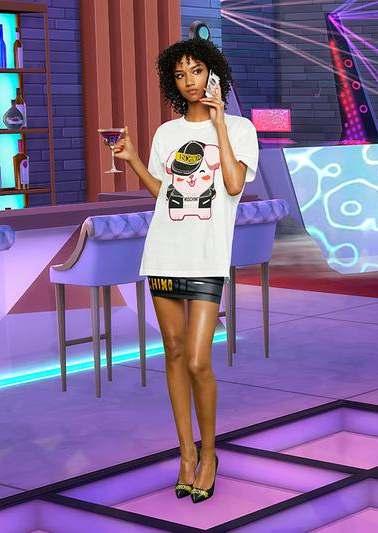
3.2 NFT Product Drops
Jacob & Co.
On April 4 2021, ArtGrails auctioned off a one-of-a-kind NFT created by Jacob & Co.’s internal design team. The highest bidder received all the physical accoutrements that come with a high-end watch, like a certificate of ownership and a case. The case contained a hard drive with the NFT — a digital rendering of a Jacob & Co. watch. Jacob & Co. Benjamin Arabov, CEO, Jacob & Co., said NFTs are new ground for the company, but he envisions a bright future for the technology’s usefulness in fashion.
Jacob & Co., the watch and jewelry company renowned for is use of diamonds, is adding a new facet to its business with the release of the first-ever luxury watch NFT.

“My hope is for Jacob & Co. to become the first luxury brand to launch a successful NFT and pave the way for other luxury brands to start launching products & collections through NFT. It’s not a matter of ‘if’ NFTs will have a place in the watches and luxury world, but ‘when.’ For Jacob & Co., the ‘when’ is now, and we are prepared to pioneer this shift.”
Benjamin Arabov, CEO, Jacob & Co.’s
3.2 NFT Product Drops
RTFKT Studios
The latest sale from the virtual sneaker brand RTFKT Studios generated $3.1m USD in 7 minutes.
RTFKT studios is a leading online destination for men's contemporary fashion and streetwear. They aim to become “Supreme”of the Digital World.
“We wanted to show people the future, and we made it happen. This collab is the result of a perfect alignment of all the cultures we love and know. We believe this is the start of a new revolution.” RTFKT’s founders, Benoit Pagotto, Zaptio, and ClegFX.
The brand’s latest sale is a collaboration with the crypto-artist known as FEWOCiOUS, an 18-year old with a rapidly rising profile in the digital space. The two collaborated on a series of virtual sneakers, accompanied by digital merchandise in the form of a ‘Drip’, and a ‘Charm’.

3.3 The Commerce of Gaming
Gen-Z, today, holds a purchasing power of around $44 billion. This is the generation which grew up with a smartphone unlike any of their predecessors. Digital world is where they interact, shop and express. It has become imperative for Luxury brands to understand the new consumer behavioural trends.
Adding to these, the coronavirus pandemic has given a further impetus to the gaming and esports market.
According to Newzoo's recent report, the global games market will generate revenues of $159.3 billion in 2020. Gaming is also predicted to surpass $200 billion by the end of 2023.
THE CONVERGENCE OF GAMING AND FASHION
Fashion is rarely just about utility. It is a means of self-expression and a way to communicate status and identity. Shoppers of today seek ways to signal these attributes through the digital world as much as the physical one, and this has created an opportunity for fashion to go virtual.
Gamers are turning to in-game merchandise in order to compete with others or differentiate themselves online giving a rise to the "Fashion Avatars". This is the
convergence of Luxury, Gaming and NFT.
Gaming is also becoming the new language of storytelling and point of connection with the new generation. This is partly due to the emergence of a new generation of gamers who also happen to hold big spending power. According to Kantar research, almost 90% of Gen Z are gamers, compared to 59% of the total population.
Luxury fashion industry is seizing the opportunity to target consumers. From gaminginspired fashion designs, to brands creating their own games – and even a new category of virtual (and shoppable) styling games targeted at fashion consumers – there's been a lot of activity in this space of late.
The new language for Brand Storytelling and Customer Engagement - Gaming
3.3 The Commerce of Gaming
As gaming, VR and other 3D technologies continue to become more and more advanced, hyper-realistic and grow exponentially in adoption, NFTs present unlimited use cases and potential in terms of what they can enable for the luxury brands.
The intersection between gaming and NFTs is starting to present very unique use cases around new industries like digital-only 3D fashion. Digital fashion is still a relatively new market segment, but at its full potential it is going to open up a whole new world for both designers, developers and consumers. The future of seamless immersive digital experiences is all about self-expression and being able to empower concepts of individualism and identity—rooted as some of our most core values as humans, and ultimately, form our human nature. Fashion is a distinct method and channel of communication that allows us to
self-express. In the digital world, this desire for self-expression won’t change, and digital fashion will be a huge market segment.
Luxury maisons such as Louis Vuitton, Gucci, Moschino among others are capitalising on the the commerce of gaming through:
1. Capitalising on the power of gaming influencers
2. Gamified promotions
3. Driving commerce through gaming partnerships
4. Virtual styling and immersive shoppable games

2020, Gucci released tennis outfits in both real and virtual worlds
3.3 The Commerce of Gaming
1. Capitalising on the power of gaming influencers
A new layer of commercial opportunities added to the growth of professional gaming for a twist. For example, League of Legends has 13 leagues where 80 professional players and 100 professional teams compete. This means there are huge advertising opportunities for brands in esports, similar to within traditional professional sports such as football or basketball.
Gaming influencers gaining popularity is another big reason why brands are keen to get involved. Louis Vuitton also designed the trophy case for League of Legends’ 2019 Summoner’s Cup, which was eventually won by Chinese team FunPlus Phoenix (FPX). According to reports, the championship final drew in a massive 99.6 million unique
viewers, giving Louis Vuitton unprecedented reach.
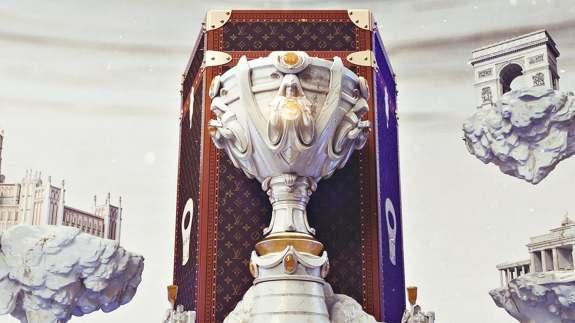
The Louis Vuitton trophy designed for League Of Legends took over 900 hours
The level of engagement seen in gaming also means that brands are able to forge real connections with fans. Twitch broke viewership records in Q2 2020, reaching a total of 5 billion hours watched. This record breaking viewership concludes that a partnership with a gaming influencer doesn’t just mean a one-off video or a single Instagram post, but the open opportunity for a brand to draw the attention of millions of people tuning into daily
streams.
3.3 The Commerce of Gaming
2. Gamified promotions
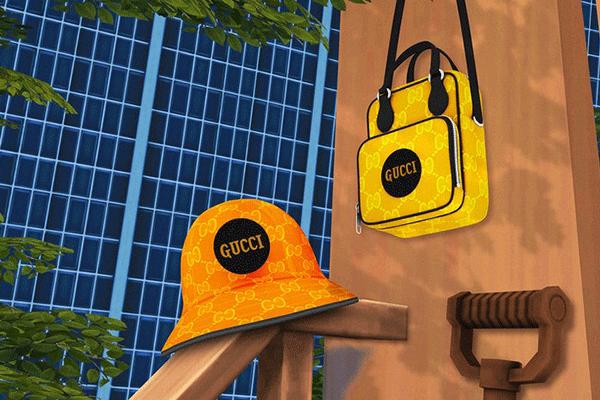
The gamification promotions are increasingly becoming a choice for Luxury players. Gucci took advantage of the growing Gamification advertising experience trend to promote a new capsule collection within the successful videogame Tennis Clash. Louis Vuitton, Kenzo and Raf Simons are among the most famous brands that started to test the water on digital channels, but this year Gucci really raised the bar. In June 2020, the Florence-based Maison announced a partnership with the app Tennis Clash, designed by Wildlife Studios, that today boasts more than 10 million downloads just on Google Play Store. Following the success of Gucci Arcade, 70s and 80s inspired videogames accessible directly from the Gucci brand’s app, the House has introduced a variety of content within the Wildlife game that simulates tennis matches. Players can participate in a virtual tournament entirely sponsored by the fashion house (Gucci Open) and, above all, they can customize their avatars with exclusive Gucci branded suits, which are also directly available for purchase thanks to an immediate connection to the e-commerce of the maison.
3.3 The Commerce of Gaming
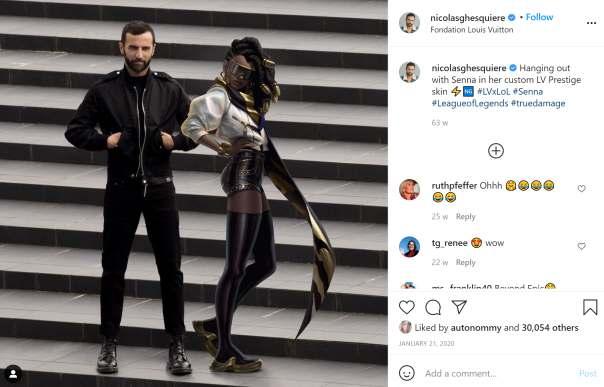
In November 2019, to celebrate the Finals of League of Legends World Championship, Louis Vuitton designed two custom skins for heroes Qiyana and Senna for the Championship. Important to note here is to create a sense of "exclusivity" in line with the brand equity. Product placement can come across and shallow or “salesy”, but Louis Vuitton avoided this by ensuring the partnership involved real creativity and brand storytelling. The brand didn't just fix its monogram onto virtual clothes, but created authentic and stylistic character outfits.
A look at the cost for creating a Qiyana inspired LV outfit:
Source: InvenGlobal

Merchandise pictures are indicative
3.3 The Commerce of Gaming
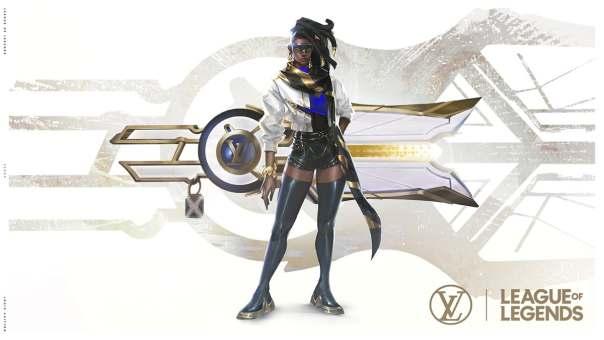
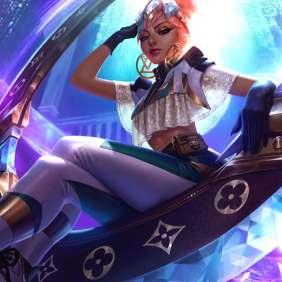
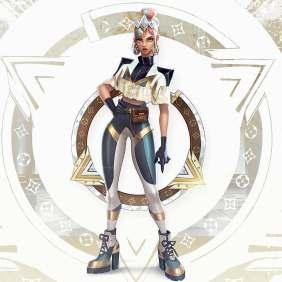
3.3 The Commerce of Gaming
3. DRIVING COMMERCE THROUGH GAMING PARTNERSHIPS
Adding to the list of brand involvement in gaming- Moschino designed a capsule collection for The Sims in 2019, as well as an analogous collection that was available to buy.
In particular, Moschino demonstrates how the fashion world often gathers inspiration from gaming and vice versa, the Sims’ recognisable personas have influenced Moschino designer Jeremy Scott. Items from the ready-to-wear collection include a plum bob (the diamond which floats over Sims’ heads) design swimsuit and a pixelated biker bag.

Spring/Summer 2019 ready-to-wear by Moschino
“I love the idea of being able to imagine, design and bring to life a world of individual personas with The Sims universe… That concept emulates what I get to do for each collection at Moschino as I create a fantasy universe of spectacular storylines and characters.” - Jeremy Scott, Creative Director, Moschino
3.3 The Commerce of Gaming
Fashion brands don’t have to appear in games to capitalise on their popularity but can also create some sole affiliation through their merchandise.
For example, Gucci released a limited-edition watch in partnership with esports entertainment brand Fnatic. The watch features the Fnatic logo as well as the letters GG (which stands for ‘good game’ in the gaming world), available to buy online for £1,150. Though it’s a hefty price tag, it's also an instance of how luxury fashion brands are acknowledging gaming as a viable driver of commerce, rather than just a promoting tool. Brands also test waters by releasing limited-editions and gauge whether or not there is notable demand from users.
Marketing has always been a bonus, and has led a lot of brands to launch their own video games. Gucci came up with the ‘Gucci Arcade’ – the gaming vertical found on its own retail app. Games such as ‘Gucci Dive’, for example – released to coincide with the watch’s launch – involve users diving into an underwater cave using a Fnatic-branded submarine to collect coins.
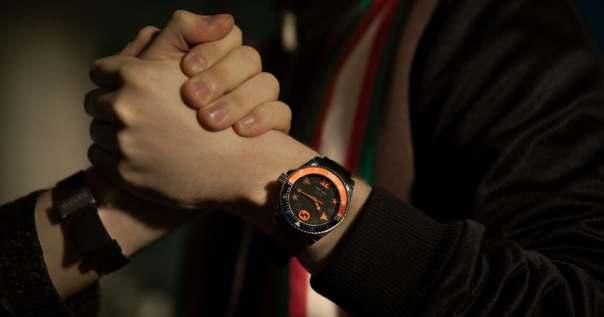
Fnatic X Gucci
With the aim of submerging players in the world of Gucci, as well as increasing the amount of time spent in branded retail apps, these types of games can be an effective vehicle for brand storytelling.
3.3 The Commerce of Gaming
4. VIRTUAL STYLING AND IMMERSIVE SHOPPABLE GAMES
Fashion brands are conceding the advantage of using ‘game-like’ customisation in AR applications for achieving the aim of virtual styling. Yoox launched YooxMirror Reloaded in 2019, is a similar example. In order to do virtual try-on for various clothing items, the AIpowered ‘styling suite’ allows users to create their own digital avatar. The objective is to create an entertainment experience for consumers – one that is designed to generate interaction through personalised experimentation with fashion.

The new YooxMirror reloaded functionality. Image Courtesy: wwd.com
For Yoox, the main motto is to combat returns, giving customers a stronger idea of what clothes suit them like before the actual purchase. Speaking to GQ magazine, president of Yoox, Paolo Mascio said: “We firmly believe that games and interactive initiatives have
a business relevance. They are key to offering an innovative and personalised shopping experience, which is what customers, millennials and gen-Z in particular are increasingly asking for.”
While YooxMirror is rooted in real-life shopping, the emergence of a new type of virtual styling is also seen- one that is more aligned to the typical gaming experience.
3.3 The Commerce of Gaming
Drest – created by former Harper’s Bazaar UK Editor Lucy Yeomans – has been described as “the world’s first interactive luxury styling game.” Essentially, it allows players to act as a fashion stylist, curating looks which are then rated by others, with the aim of gaining ‘influence’.
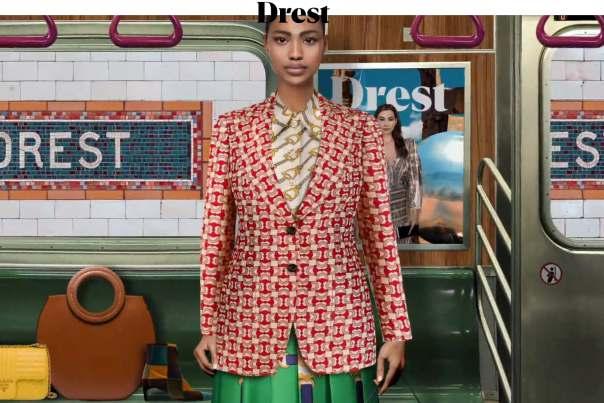
Drest - image source drest.com
The key is that Drest is also shoppable, as players are able to directly buy the pieces found in the game – hence 160 brands including Burberry and Valentino have partnered up. This is also because, adding to direct sales, Drest gives brands the chance to showcase their latest runway designs and generate valuable awareness from the player data such as pieces having the most popularity.
Ultimately, Drest aims to update the adage of ‘playing dress-up’ for a modern audience, cleverly combining together the worlds of gaming and fashion to allow players to express themselves – both virtually and in real life. It also builds on the increasing popularity of virtual try-on applications, such as L’Oréal’s Modiface.
3.4 Digital Fashion Platforms
DressX
Los Angeles, United States of America

DressX claims to be the first International digital fashion multi brand retailer that carries digital fashion collections from most well-known contemporary brands. In 2019, they launched a series of content-driven pop-up stores in Los Angeles to test the idea and came to the conclusion that people enjoy creating fashion content for their social media presence and happily share it. Their research highlighted that 9% of customers in developed countries only buy new clothes to make a picture for their social media and return after taking a photo. These unnecessary returns pose a big logistical challenge for retail. Essentially, these clothes don’t need to be produced - they can only exist in the digital space. The 2020 coronavirus lockdowns accelerated DressX launch, and the website went live in July 2020 in the midst of the pandemic. The pandemic made more people grow their online presence and thus made them more prone to use digital fashion for content creation. This was just the right time to enter the virtual fashion market.

DressX aims to reduce returns and in turn contribute to sustainable initiatives in fashion
sector while creating a virtual fashion platform for personal expression and new form of consumption. They have worked with traditional fashion creatives, launching designers. For example LVMH-nominee designer Paskal, whose outfits, usually costing around $700-1100, were launched for less than $50 in the digital format. They have also collaborated with Buffalo London and The Fabricant, another virtual fashion player.
3.4 Digital Fashion Platforms
Neuno
Sydney, Australia
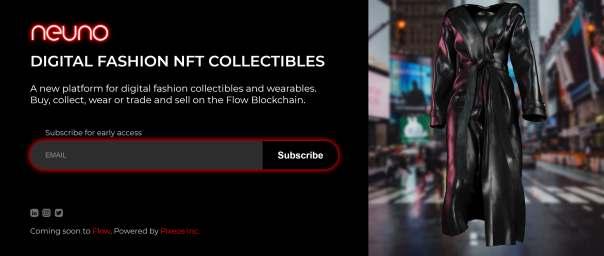

Neuno, the Australian-based NFT marketplace, wants to sell digital fashion and claims to be working with five luxury brands on 3D clothing. Additionally, it has partnerships with some of Asia’s biggest games so that NFT owners can dress up their avatars. The startup uses Dapper Labs’ blockchain Flow. Customers would be able to buy NFTs with their credit cards, removing the need to own cryptocurrency.
To ensure the exclusivity associated with luxury garments, Neuno only works directly with brands as opposed to other marketplaces where anyone is free to upload and sell NFTs. Neuno’s purpose is enabling NFT owners to dress avatars, expanding the use of luxury NFTs beyond ownership of an edited image.
"We want to be the universal 3D wardrobe that plugs into everything, for example, imagine if somebody bought the iconic J Lo Versace dress on our site.”
CEO Natalie Johnson, Neuno
3.4 Digital Fashion Platforms
The Fabricant
Amsterdam, Netherlands

The Fabricant focuses on high-dollar couture. They sold a diaphanous $9500 virtual dress to Richard Ma, the CEO of Quantstamp. The company employs classically-trained fashion designers who work in a "digital atelier" to design, drape, and code each garment. Their business is divided into two strands: the fashion house side of the business and the brand
partnerships arm, which operates like an agency. They had recently partnered with shoe brand Buffalo London to make a digital-only version of the brand's signature sneakers, emblazoned with flames. Customers can appear in the shoes, but only in the digital space.
Buffalo London x The Fabricant
The digital sneakers produced by The Fabricant for Buffalo London
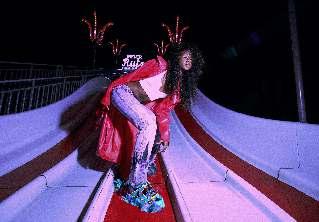
3.4 Digital Fashion Platforms
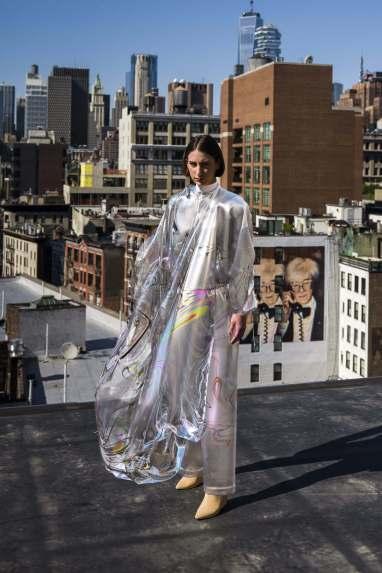
The Fabricant recently ran a 3D fashion design competition in collaboration with Adidas and Karlie
Kloss’s nonprofit, Kode With Klossy.
The top 20 submissions were then auctioned as NFTs. They were also on display in a gallery in Decentraland, a marketplace for digital assets. Visitors inhabiting avatars could view the
artwork and virtually bid on the designs. The winning design netted 1.4 ETH, about $2,400 at current exchange rates. Proceeds from the
auction went directly to the featured artists, while voluntary contributions supported new events and programming for Kode With Klossy’s alumni community.
Founder Kerry Murphy said.
3.4 Digital Fashion Platforms
IMVU
Redwood City, California, United States of America



In January 2021, IMVU launched its VCOIN token, a fixed priced tokenized in-game currency. The 3D social chat experience has been around for more than 15 years and its ecosystem allows people to design and trade clothing, 3D environments and services. The VCOIN can be bought from IMVU at a fixed price. It’s used as an alternative to in-game credits but can be transferred outside of the platform and cashed out.
The platform processes 27 transactions and 13 billion credits per month. To use VCOIN inside the IMVU experience, a user doesn’t need a crypto wallet.

Last November, IMVU received a no-action letter from the SEC, which does not classify VCOIN as a security. However, it has to comply with numerous requirements such as not listing VCOIN on an exchange, making unlimited quantities available to maintain a fixed token price and not using proceeds to finance its Upgrade.
“The service economy is a huge part of the IMVU experience,” explains Daren Tsui, CEO of IMVU. “For example, if two users want to host an event, they may hire a room decorator, a photographer, a stylist, and more, to make their event happen. Historically, payment for those services was happening off-platform, which adds a layer of friction and vulnerability to the transaction. With VCOIN, users can instantly pay for those services on the platform, and then easily convert those earnings to cash around the globe.”
3.4 Digital Fashion Platforms
Carlings
Billingstad, Norway
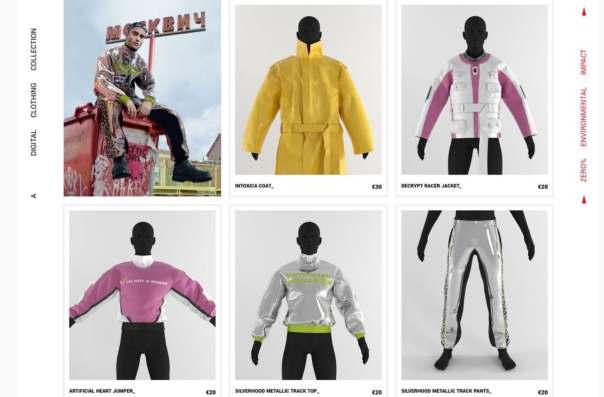
Norway-based brand Carlings made 120 million euros in revenue in 2018, as it invests its efforts in 3D design and training employees to produce 3D collections. Known for their denim lines, they were one of the first brands to stampede into selling virtual 3D collections and items from 10 euros to 30 euros a piece. On Carlings, you can buy a digital piece of clothing, upload a photo of yourself and have the artists at Vice digitally dress you up. The artwork is delivered back to the customers ready to share on social media. The purchasing process is automated using the headless commerce service Crystallize. The charges are EUR 20 per artwork.
Carlings CEO Ronny Mikalsen said that he sees 3D collections as the future, and also a sustainable solution for the world, currently inundated with excess clothing trash. The digital clothing industry, currently driven by a legion of social media-obsessed millennials, are expected to drive those sales, and has the potential to represent one percent of the fashion market share at $25 billion. Fortnite, the top money making, free-to-play game reportedly made an estimated $2.4 billion in 2018.
NFT NFT NFT trading trading trading platformsplatformsplatforms
OpenSea | NBA Top Shot | Rarible | Cryptopunks | SuperRare | Sorare
| Aavegotchi | Foundation | Atomic Market | Axie Infinity |
MakersPlace | KnownOrigin | Nifty Gateway | Enjin Marketplace
4.1 NFT Marketplace (extended)
NFT Marketplaces are cropping up everyday!
NFT marketplaces are quickly rising to prominence in 2021. Simply put, they provide a marketplace for the buying, selling, and trading of NFT tokens. Many of these provide platform to artists who basically only existed on Instagram or Twitter and were creating all this really special work, but never had a way to make money from it. They can now sell crypto art and are already starting to see some benefits and recognition.
Investments in NFTs rose 299% in 2020, gaining popularity as cryptocurrencies like Bitcoin continued to boom, according to the report. In the past 30 days alone, NFT Marketplaces have generated over $1 billion in sales, according to CryptoSlam.
Below is rankings and analysis of NFT Marketplaces with respect to their token trading volumes, number of traders per marketplace and more key metrics. OpenSea is a dominant player currently followed by NBA Top Shot.

Source: DappRadar (08 March - 07 April 2021)
4.1 NFT Marketplace (extended)
OpenSea
United States of America

OpenSea boldly describes itself as being the largest NFT marketplace. It offers a wide range of non-fungible tokens, including art, censorship-resistant domain names, virtual worlds, trading cards, sports, and collectibles. It includes ERC721 and ERC1155 assets. You can buy, sell, and discover exclusive digital assets like Axies, ENS names, CryptoKitties, Decentraland, and more. They feature over 700 different projects, including trading card games, collectible games to digital art projects, and name systems like ENS (Ethereum Name Service).
Creators can create their own items on the blockchain using OpenSea's item minting tool. You can use it to make a collection and NFTs for free, without the need for a single line of code. If you're developing your own smart contract for a game, digital collectible, or some other project with unique digital items on the blockchain, you can easily get added to OpenSea.
If you're selling items on OpenSea, you can sell an item for a fixed price, create a declining price listing, or make an auction listing.
4.1 NFT Marketplace (extended)
NBA Top Shot
Vancouver, British Columbia, owned by DapperLabs

NBA Top Shot is a first-of-its-kind collectible game that allows people to collect, trade, and sell their favorite NBA highlights as digital tokens. These highlights can be collected to complete timed challenges, arranged into showcases, and eventually carried over into the forthcoming game experience!

4.1 NFT Marketplace (extended)
Rarible
Moscow, Russia
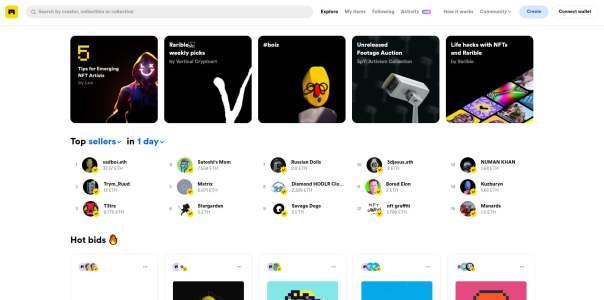
Rarible is a community-owned NFT marketplace, with its "owners" holding the ERC-20 RARI token. Rarible awards the RARI token to active users on the platform, who buy or sell on the NFT marketplace. It distributes 75,000 RARI every week.
The platform places a particular focus on art assets. Creators can use Rarible to "mint" new NFTs to sell their creations, whether they be books, music albums, digital art, or movies. The creator can even show a sneak peek of their creation to everybody who comes to Rarible but limit the full project to the purchaser.
Rarible buys and sells NFTs in categories like art, photography, games, metaverses, music, domains, memes, and more.
4.1 NFT Marketplace (extended)
Cryptopunks
United States of America, owned by Larva Labs

Crytopunks showcases 10,000 unique collectible characters with proof of ownership stored on the Ethereum blockchain, and is project that inspired the modern CryptoArt movement. Selected press and appearances include Mashable, CNBC, The Financial Times, Bloomberg, MarketWatch, The Paris Review, Salon, The Outline, BreakerMag, Christie's of London, Art|Basel, The PBS NewsHour, The New York Times in 2018 and again in 2021. The Cryptopunks are the first "Non-Fungible Token" on Ethereum and inspiration for the ERC721 standard that powers most digital art and collectibles. Released in 2017, the project was developed by American studio Larva Labs, a two-person team consisting of Matt Hall and John Watkinson. The crypto art blockchain project was an inspiration for the ERC-721 standard for NFTs and the modern crypto art movement.
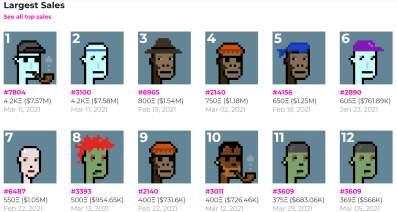

4.1 NFT Marketplace (extended)
SuperRare
Newark, Delaware, United States of America
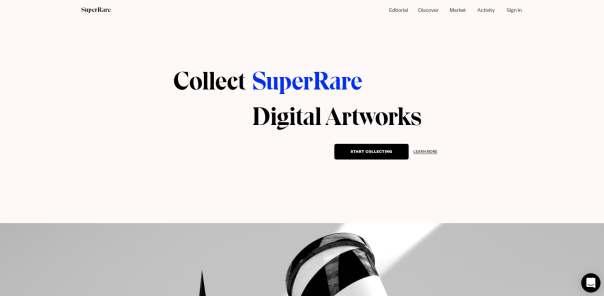
SuperRare has a strong focus on being a marketplace for people to buy and sell unique, single-edition digital artworks. Each artwork is authentically created by an artist in the network and tokenized as a crypto-collectible digital item that you can own and trade. They describe themselves as being like Instagram meets Christie's, offering a new way to interact with art, culture, and collecting on the internet.
Each artwork on SuperRare is a digital collectible– a digital object secured by cryptography and tracked on the blockchain. SuperRare has built a social network on top of the marketplace. As digital collectibles have a transparent record of ownership, they're perfect for a social environment.
All transactions are made using ether, the native cryptocurrency to the Ethereum network.
At the moment, SuperRare works with a small number of hand-picked artists; however, you can use a form to submit your artist profile to get on their radar for their upcoming full launch.
4.1 NFT Marketplace (extended)
Sorare
Paris, France

Sorare is a fantasy game of soccer, where players buy, sell, trade, and manage a virtual team with digital player cards. The game uses blockchain technology based on Ethereum and was developed in 2018 by Nicolas Julia and Adrien Montfort. The concept is that players, as managers, compose virtual teams of five soccer players, from blockchain cards on the Sorare platform. Teams are ranked based, on the performance of their players on the real-world soccer pitch, and attributed points, just like traditional fantasy football.
Some of the cards are licensed digital collectibles (rare, super-rare and unique cards). Sorare operates on Ethereum's underlying blockchain network to secure the ownership and distribution of cards.
The licensing partnerships Sorare signs with leagues, such as the K League and clubs such as Real Madrid, allows the Sorare cards to have the official branding with the season's player photos and player names.
In May 2019, the company announced a pre-seed round of EUR 550k including the technology entrepreneur Xavier Niel. In July 2020, the company raised 4 million with German football World Cup champion André Schürrle, among others.[3] They are also backed by UbiSoft, E-Ventures, Partech & Consensys. In December 2020, the company raised another 3.5 million with World Cup champion Gerard Piqué, among others.
4.1 NFT Marketplace (extended)
Aavegotchi
Singapore
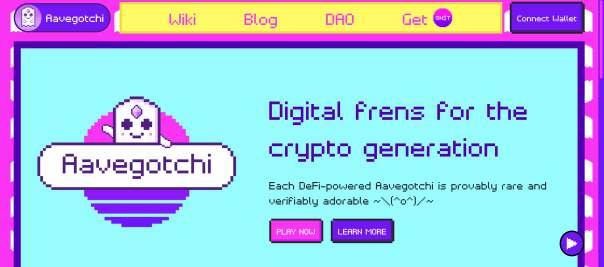
Aavegotchis are rare crypto-collectibles living on the Ethereum blockchain, backed by the ERC721 standard used in popular blockchain games such as Cryptokitties, Axie Infinity, and Cryptovoxels. Rumor has it that Aavegotchis are actually the ghosts of liquidated yield farmers determined to return and bring honor to their familia.
Aavegotchi introduces many innovations into the blockchain gaming sphere, including DeFi token collateral stakes, dynamic rarity, rarity farming, DAO-governed game mechanics, and an open metaverse with smart contract interoperability and in-world town hall style voting. Just like the original Tamagotchi introduced the world to digital pets, Aavegotchi introduces the world to playable NFTs, backed by digital value.
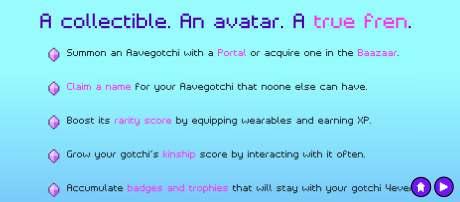
4.1 NFT Marketplace (extended)
Foundation
New York, United States of America
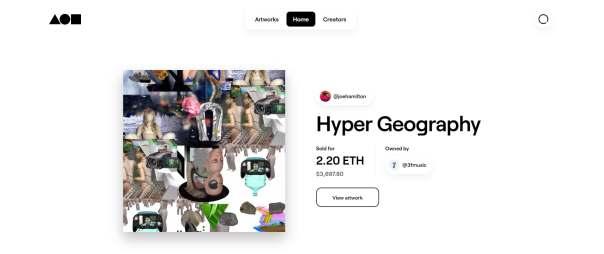
Foundation is a specialist platform designed to bring digital creators, crypto natives, and collectors together to move culture forward. It calls itself the new creative economy. Its primary focus is on digital art.
In the first blog post on their website in August 2020, they announced an open call for creators to experiment with crypto and play with the concept of value. They invited creators to "hack, subvert, and manipulate the value of creative work."
Whenever an NFT trades on Foundation, the artist makes 10% on that secondary transaction, i.e., an artist receives 10% of the sales value any time a collector re-sells their work to someone else for a higher price.
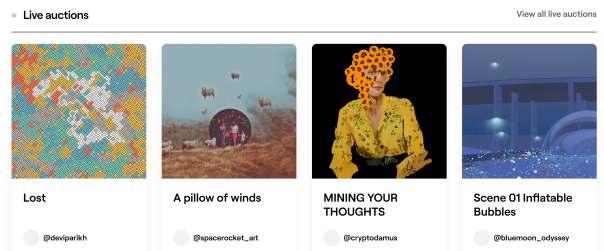
4.1 NFT Marketplace (extended)
AtomicMarket
United States of America
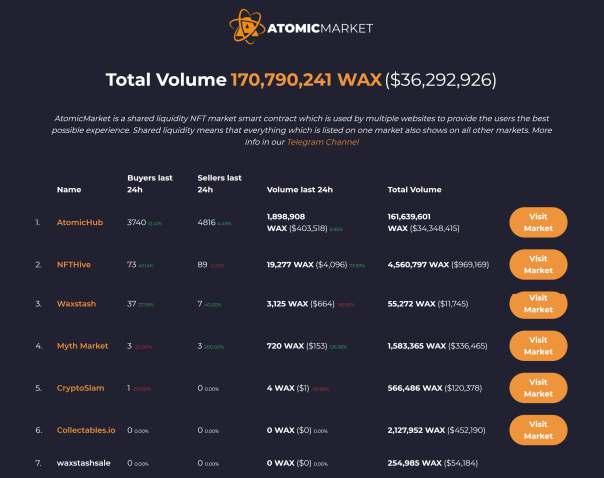
AtomicMarket is a shared liquidity NFT market smart contract that is used by multiple websites. Shared liquidity means that everything listed on one market also shows on all other markets.
It is a marketplace for Atomic Assets, a standard for non-fungible tokens on the eosio blockchain technology. Anyone can utilize the Atomic Asset standard to tokenize and create digital assets and buy, sell and auction assets using the Atomic Assets marketplace.
You can list your own NFTs for sale on the AtomicMarket, and you can browse existing listings. NFTs of well-known collections get a verification checkmark, which makes it easier to spot the real NFTs. Malicious collections are blacklisted.
4.1 NFT Marketplace (extended)
Axie Infinity
Singapore
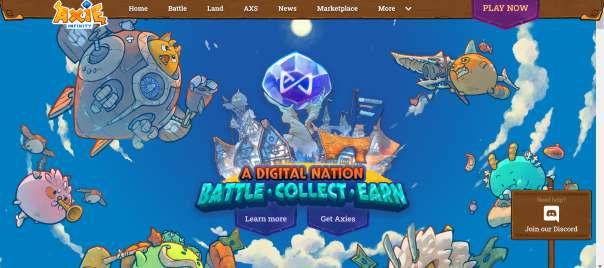
The official marketplace for the game Axie Infinity, where find Axies, Land and other various items used in the game.
Axie Infinity is a digital pet community centered around collecting, training, raising, and battling fantasy creatures called Axie.
Each Axie has unique genetic data stored on the Ethereum blockchain. Each Axie can possess 6 out of hundreds of possible body parts. Each body part has their own battle move so the combinations for creating unique little battlers are infinite!
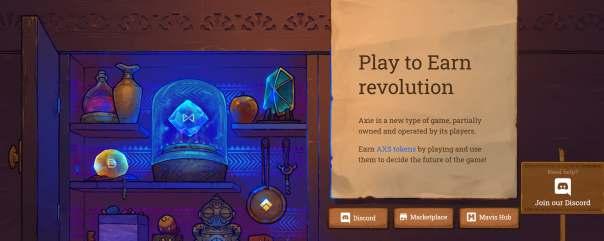
4.1 NFT Marketplace (extended)
Makersplace
San Francisco, United States of America
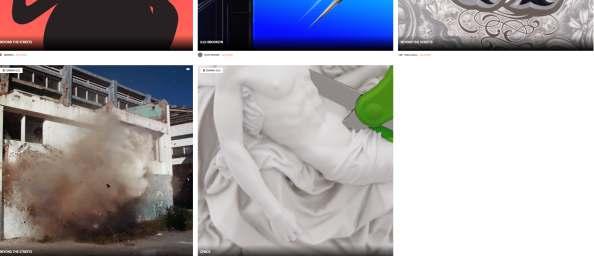

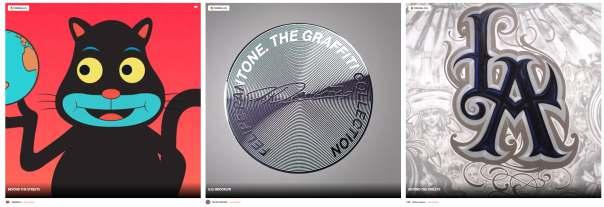
MakersPlace is a marketplace to discover and collect truly unique digital creations by the world's most creative minds. Every digital creation available through MakersPlace is an authentic and truly unique digital creation, signed and issued by the creator. Artists, photographers, writers, and more use MakersPlace to create and sell their work online through the use of blockchain technology.
4.1 NFT Marketplace (extended)
KnownOrigin
Manchester, United Kingdom
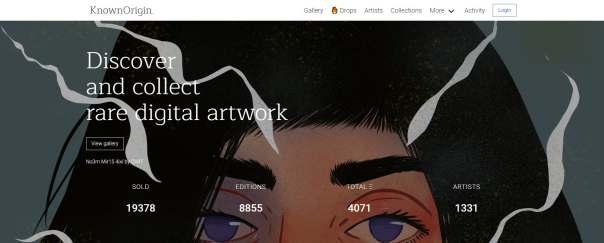
KnownOrigin is a market where you can discover and collect rare digital artwork secured by the Ethereum blockchain. Creators can submit digital artwork as a jpg or Gif to the KnownOrigin gallery, with all files on IPFS.
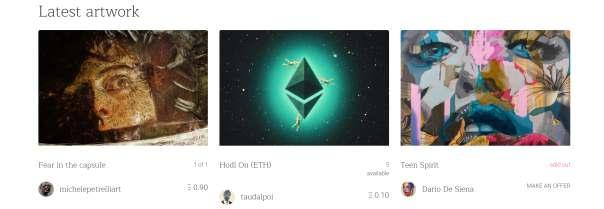

4.1 NFT Marketplace (extended)
Nifty Gateway
New York, United States of America
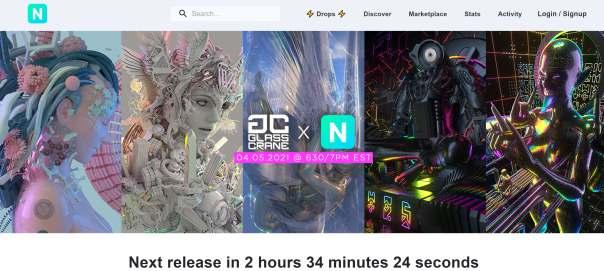
Nifty Gateway is the premier marketplace for Nifties, which are digital items you can truly own. Centralized and USD based, this is a marketplace for buying and selling Nifties.
Nifty Gateway allows the display of Nifties, as well as withdraw them to external wallets, or deposit Nifties from external wallets into your collection.
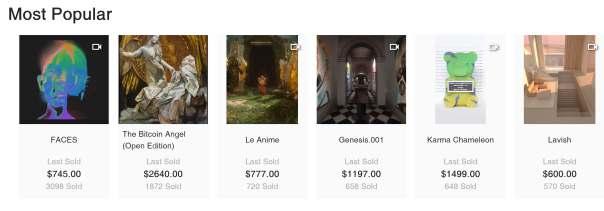
4.1 NFT Marketplace (extended)
Enjin Marketplace
Singapore
Enjin Marketplace is a mechanism by which you can explore and trade blockchain assets. It is the official marketplace for Enjin based NFTs. To date, it has enabled $43.8 million of Enjin Coin to be spent on digital assets, involving 2.1 billion NFTs. 832.7K items have been traded. You can use the Enjin Wallet to easily list and purchase gaming items and collectibles. The Projects page features Enjin-powered blockchain projects, from game item collections like the Multiverse and games like Age of Rust and The Six Dragons to gamified reward programs such as Microsoft's Azure Heroes, community-created collectibles, and NFTs by companies like Binance and Swissborg.


All the images belong to their original source
On the Cover: Kuki AI modelling an NFT by digital designer Yekaterina Burmatnova featuring a Pinar & Viola x Google Daydream print at Crypto Fashion Week. YEKATERINA BURMATNOVA/ICONIQ AI
McKinsey: The State of Fashion 2021 https://www.mckinsey.com/~/media/McKin sey/Industries/Retail/Our%20Insights/State %20of%20fashion/2021/The-State-of-
Fashion-2021-vF.pdf
Gucci Prepares To Release NFT, More Luxury Brands To Follow: Report https://www.benzinga.com/markets/crypto currency/21/04/20485286/gucci-preparesto-release-nft-more-luxury-brands-tofollow-report
Gucci, other luxury fashion brands are poised to launch NFTs https://www.theblockcrypto.com/linked/10 0515/gucci-other-luxury-fashion-brands-nft-
report
Game, Set, Gucci: You can now wear new exclusive Gucci outfits in Tennis Clash https://www.itsnicethat.com/news/guccitennis-clash-fashion-digital-290520
How Digital Fashion Could Replace Fast Fashion, And The Startup Paving The Way https://www.forbes.com/sites/brookerober tsislam/2020/08/21/how-digital-fashioncould-replace-fast-fashion-and-the-startuppaving-the-way/?sh=66fa290a70d8
DIOR x Rimowa - The Launch of the
Collaboration https://atomicdigital.design/works/diorrimowa-the-launch-of-the-collaboration
Creating a Metaverse at London Fashion Week https://www.fialondon.com/projects/steven tai-x-ilmxlab/
Enjin enters the fashion world with augmented reality NFTs https://cointelegraph.com/news/enjinenters-the-fashion-world-with-augmentedreality-nfts
Be your own avatar – YOOXMIRROR reloaded https://www.ynap.com/news/be-your-ownavatar-yooxmirror-reloaded/ Virtual Fashion: From Gaming to the Runway https://nowfashion.com/virtual-fashionfrom-gaming-to-the-runway-28800
NFTs could bridge video games and the fashion industry https://techcrunch.com/2021/03/22/nftscould-bridge-video-games-and-thefashion-industry/
Latest digital fashion trends https://www.ftaccelerator.it/blog/digitalfashion-virtual-clothing/
The business of hype: why so many fashion brands are now doing “product drops” https://fashionunited.uk/news/retail/thebusiness-of-hype-why-so-many-fashionbrands-are-now-doing-productdrops/2018101739501
Virtual fashion will allow people to "go completely crazy" online says Amber Jae Slooten of The Fabricant https://www.dezeen.com/2020/10/23/virtu al-fashion-amber-jae-slooten-the-fabricant/
‘The Sims’ and Moschino Unveil
Spring/Summer 2019 Capsule Collection https://hypebeast.com/2019/4/moschinothe-sims-capsule-collection-info
Avant d’acheter ces sneakers Atari NFT aux
enchères, Snapchat permet de les essayer https://lareclame.fr/atari-rtfkt-sneakerssnapchat-246672
Why NFTs Could Mean Windfall Profits for Fashion https://www.lofficielusa.com/fashion/nftsimpact-fashion-industry-crypto-currency
Gucci Sneaker Garage App Lets You Design Virtual Shoes https://hypebeast.com/2020/8/guccisneaker-garage-app-info
Gucci's New Sneakers Cost Only $12 USD but You'll Never Be Able to Wear Them https://hypebeast.com/2021/3/guccivirtual-sneakers-twelve-usd-nft-news
From Burberry to Louis Vuitton and beyond: Why gaming is the next big thing in high fashion https://www.gqmagazine.co.uk/fashion/article/fashiongames-burberry-louis-vuitton-hermes DressX https://dressx.com/
DressX – Future of Fashion https://www.lofficiel.com.cy/fashion/dressxnew-fashion-reality
The Ultimate 2021 Guide to NFT
Marketplaces https://academy.ivanontech.com/blog/theultimate-2021-guide-to-nft-marketplaces
Christies https://www.christies.com/features/Monum ental-collage-by-Beeple-is-first-purelydigital-artwork-NFT-to-come-to-auction11510-7.aspx
Auction house sales to test collectors’
appetite for crypto-art https://www.ft.com/content/98b1368eb803-4653-a042-a4c1f9cdb218
People are paying millions for digital collectibles 'NFTs' - What to know about
this digital asset https://www.youtube.com/watch?v=f0j6bK RXXbc
Digital artwork sells for record $69 million at Christie's first NFT auction https://www.nbcnews.com/business/busine ss-news/digital-artwork-sells-record-60million-christie-s-first-nft-n1260544
Beeple sold an NFT for $69 million https://www.theverge.com/2021/3/11/223 25054/beeple-christies-nft-sale-costeverydays-69-million
CryptoKitties https://en.wikipedia.org/wiki/CryptoKitties
Someone just bought a cryptocurrency cat for $172,000 https://www.cnet.com/news/cryptokittiesbought-a-digital-cat-for-172000/
What is digital fashion? https://www.businessinsider.fr/us/what-isdigital-fashion-the-fabricant-nft-tributebrand-2021-3
People are buying and selling crypto collectibles in a $250 million market https://www.businessinsider.fr/us/nftmarketplaces-where-to-buy-sell-nonfungible-tokens-online-2021-3
About BLVCK PiXEL
Innovation Led By Technology And Design
BLVCK PiXEL is a Digital Innovation Consulting firm headquartered in Paris. Our global team comprises of Technologists, Innovators and Designers working on solutions to help you future-proof your business in the Digital Age.
Services
With our Experience and Technology Labs, we help you create avant-garde customer experiences leveraging advanced data management.
Personalized Approach
As true partners of your teams, we combine our business expertise to collaborate across the entire value chain by revealing your competitive advantage and by placing innovation at the heart of your services and products.
Fashion Luxury Automotive Ecommerce Retail Hospitality Entertainment Education Real Estate Tech Non-Profit
Research Team
Pranjali Apurva, Chief of Innovation, BLVCK PiXEL
pranjali@blvckpixel.com https://www.linkedin.com/in/pranjali-apurva/
Shriya Madan, Tech Researcher, BLVCK PiXEL
shriya.madan@blvckpixel.com https://www.linkedin.com/in/shriya-madan-5b1283167/
www.blvckpixel.com 40, Rue du Louvre, Paris, Ile-de-France 75001, FR
wizard@blvckpixel.com | +33 7 86 60 24 27
Tous droits réservés. La reproduction, entière ou partielle, est strictement interdite. Les marques déposées identifiées dans ce document sont la propriété de BLVCK PiXEL. Sauf accord écrit entre les parties, toute information fournie dans ce document est confidentielle et ne peut être utilisée ni révélée sans une autorisation écrite.
All rights reserved. Reproduction, in whole or in part, is strictly prohibited. The trademarks identified in this document are the property of BLVCK PiXEL. Unless agreed in writing by the parties, any information provided in this document is confidential and may not be used or disclosed without written permission.
